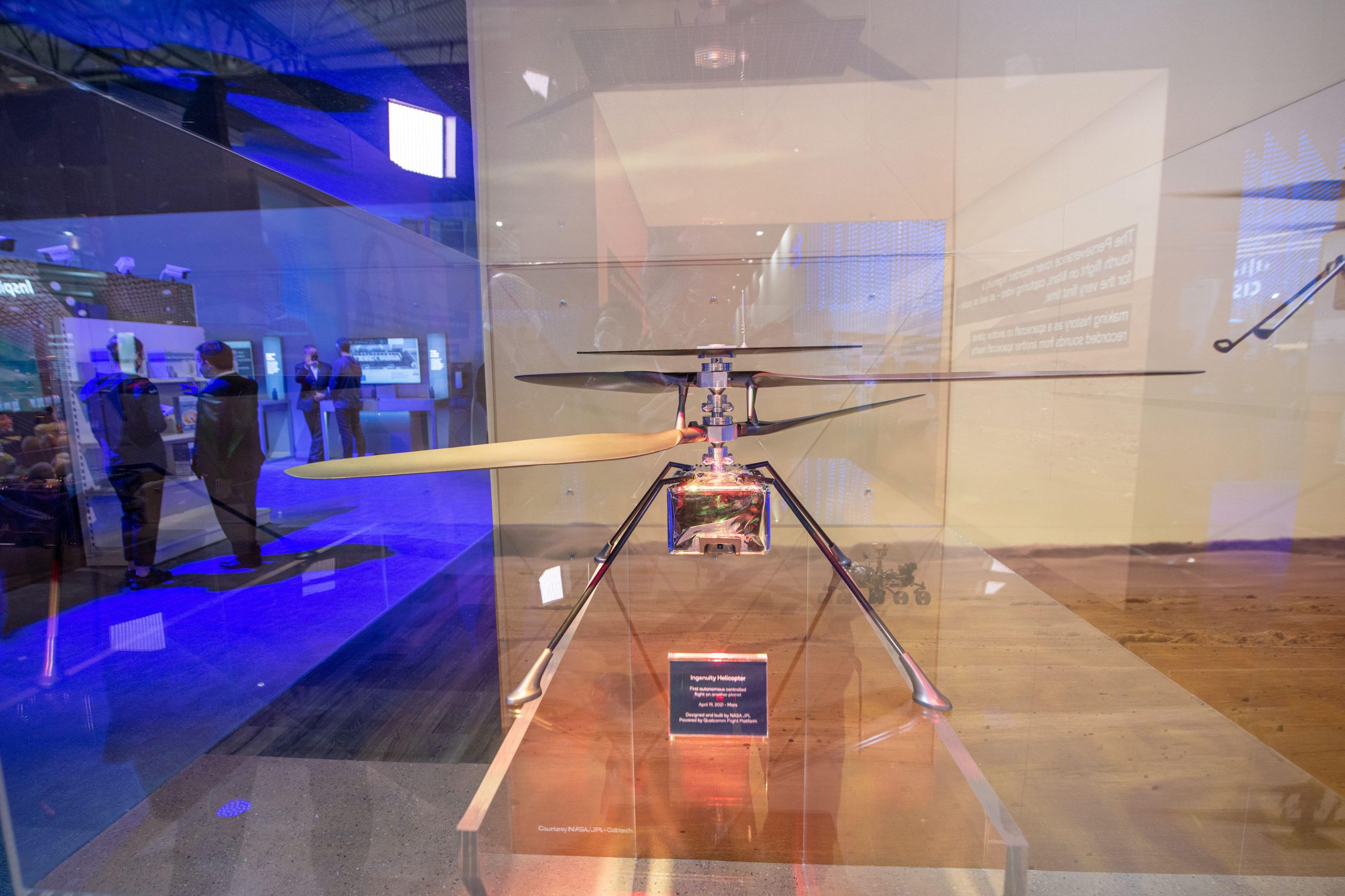
Bethany Roberts, FISM News
[elfsight_social_share_buttons id=”1″]
NASA is planning to launch two more miniature helicopters to Mars after the success of Ingenuity. The devices will be used as part of NASA’s first attempt to bring Martian rocks and soil samples back to Earth.
The helicopters will be modeled after Ingenuity, which has completed 29 flights since arriving with Perseverance at Mars early last year. Ingenuity weighs just 4 pounds and was developed to be exploratory in nature. It made history in 2021 as the first aircraft to perform a successful flight on another planet.
The new helicopters will have wheels and grappling arms, which will give them more capabilities than their predecessor.
NASA’s Mars Sample Return Program is nearing the end of its conceptual design phase for its two newest helicopters. This phase allows for the evaluation and refinement of the mini helicopters’ architecture to return the selected samples.
NASA’s Perseverance rover is currently embarked on the sample collection process in the Jezero Crater of Mars.
The architectural advances for the program, which is a combined effort from NASA and the European Space Agency (ESA), should reduce the complexity of future missions. It should also increase the probability of successful missions, NASA said.
With its architecture solidified, the program is expected to move into its preliminary design phase this October. According to NASA, this phase, which should last about 12 months, will allow for the completion of technology development and make engineering prototypes of the major mission components.
Jeff Gramling, director of NASA’s Mars sample return program, said the revised path forward is simpler. The helicopters’ designs will allow each one to lift one sample tube at a time and take multiple trips back and forth.
“We have confidence that we can count on Perseverance to bring the samples back and we’ve added the helicopters as a backup means,” Gramling said.
If Perseverance breaks down, the two helicopters would load the samples onto the rocket instead.
If all goes as planned, the samples will blast off from Mars in 2031 and arrive at Earth in 2033. Lab analysis will then be conducted to determine whether any sample shows signs of microbial life that may have existed on Mars at one point in time.
Bringing Mars samples to Earth will allow scientists to examine them using instruments that are too large and too complex to send to Mars.
“Curating the samples on Earth would also allow the science community to test new theories and models as they are developed, much as the Apollo samples returned from the Moon have done for decades,” NASA said in a statement. “This strategic NASA and ESA partnership will fulfill a solar system exploration goal, a high priority since the 1970s and in the last three National Academy of Sciences Planetary Science Decadal Surveys.”
The helicopters are scheduled to launch in 2027 and 2028.
